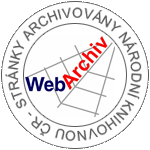Cardiogenic shock in children
Cardiogenic shock is a condition in which the heart is unable to perform properly its pump function, and therefore cannot meet the metabolic demands of the tissues. The most common causes include myocardial infarction, valvular defects, and arrhythmias. In children, we primarily consider the infectious aetiology of cardiogenic shock, or possibly congenital abnormalities. Today, we will be taking care of a pediatric patient, a five-year-old girl, who is coming to our pediatric clinic with her mother.
Review
Cardiogenic shock is a relatively rare but serious life-threatening condition in children in which the heart is unable to provide sufficient cardiac output to meet the metabolic needs of the body. The most common causes of cardiogenic shock in children include congenital heart defects and acquired diseases such as myocarditis, cardiomyopathy or certain arrhythmias. Myocarditis is most commonly caused by viruses or certain bacteria, many cases occur asymptomatically or with only mild symptoms, but can also manifest in cardiogenic shock or even sudden death. The algorithm accompanies the case report of a girl with cardiogenic shock due to myocarditis. The case is presented in a very realistic way in accordance with clinical practice, well describes the initial often non-specific symptoms and focuses on the initial procedure with an emphasis on recognizing a critically ill child using a structured approach to the patient according to the ABCDE algorithm allowing also correct initial provision of the child even in severe and initially unclear conditions. It highlights the key role of echocardiography necessary for the diagnosis and evaluation of the effect of therapy and the use of appropriate inotropic drugs (dobutamine, levosimendan) as well as non-pharmacologic procedures including ECMO in patients refractory to standard therapy. The various correct and incorrect steps of the diagnostic and therapeutic procedure are explained very well and intelligibly, and the algorithm thus offers practical instructions on how to take proper care of a child patient in cardiogenic shock.
Sources
PAVLÍČEK, Jan; RÜCKLOVÁ, Kristina a DAVID, Jan. Myocarditis and cardiomyopathy. Online. Česko-slovenská pediatrie. 2023, ISSN 00692328. Available at: https://doi.org/10.55095/CSPediatrie2023/016. [cit. 2025-03-25].
Learning targets
2. student learns what are the most common etiological causes of cardiogenic shock in the child
3. student knows diagnostic methods for confirmation of cardiogenic shock
4. student is familiar with pharmacotherapy options in cardiogenic shock
Key points
2. the diagnostic method for cardiogenic shock is ECHO (echocardiography)
3. we choose dobutamine (a positive ionotropic effect) or levosimendan (also a positive ionotropic effect - increasing sensitivity to calcium ions) as part of pharmacotherapy
4. one of the most common causes of cardiogenic shock in children is infectious myocarditis





